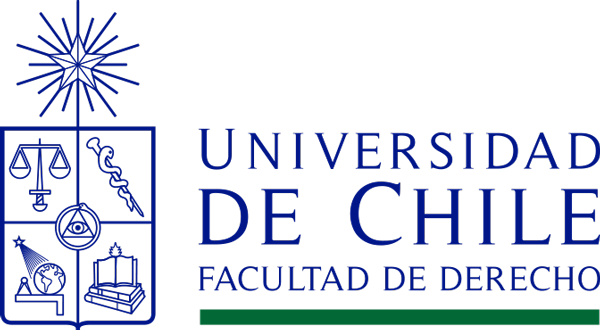First landmark: frontis
The School of Law is the oldest university institution that teaches law studies in the country. Its conformation even precedes the creation of the Universidad de Chile in 1842 and is represented in its distinctive coat of arms, on a green background (sinople) and with the characteristic symbol of justice: a scale. Strictly speaking, the study of law in Chile began with the Royal University of San Felipe, a institution of which the University of Chile (in particular, the Faculty of Law) is the continuation.
The first lecture of "canons and laws" was dictated on January 9, 1758, fulfilling the function of granting bachelor's, master's and doctoral degrees, particularly in Philosophy and Theology, according to the training needs of the local clergy. Within this framework, during the government of Manuel Bulnes Prieto, the law that created and allowed the installation of the Universidad de Chile was enacted, which was verified by merging both institutions during the rectorship of Andrés Bello, on September 17, 1843.
In 1934, the School of Law taught its classes at the Central House of the Universidad de Chile, initiating the steps for the construction of its own building to accommodate the renewal of the curriculum. The Dean of the time, Mr. Arturo Alessandri Rodríguez, took charge of the modernization of the teaching of law, by virtue of the new statutes of the University in 1931, which contemplated an increase in infrastructure and the construction of new buildings.
The Law School: an urban landmark and an expression of modernity
The architect of the University of Chile, Juan Martínez Gutiérrez, creator of important urban landmarks that are part of the Chilean collective memory, such as the School of Medicine of the University of Chile, the Bernardo O'Higgins Military School and the Votive Temple of Maipú, among many others, wins the tender, in a second instance, for the project of the Law School of the University of Chile, after a first competition was declared void; with this, Martinez has the opportunity to build his first work in the country.
The land where the project was located corresponds to a strategic location in the urban fabric of Santiago, which until then had housed the Chile Stadium, a sports venue famous for its boxing competitions.
Between the emptiness and sinuosity of the Mapocho River, the permeability and foliage of Parque Forestal and the presence and height of Cerro San Cristóbal, the essential territorial elements converge to organize and configure the urban fabric, containing the city.

